I absolutely love fresh zucchini in the summer and sometimes just want to use them in soups and stews later in the year. However, zucchini is a seasonal vegetable, so it is not always available. Freezing zucchini is a simple process that will preserve its flavor and texture all year long. Learn how to freeze zucchini to make it easy to use in your favorite recipes anytime you want!
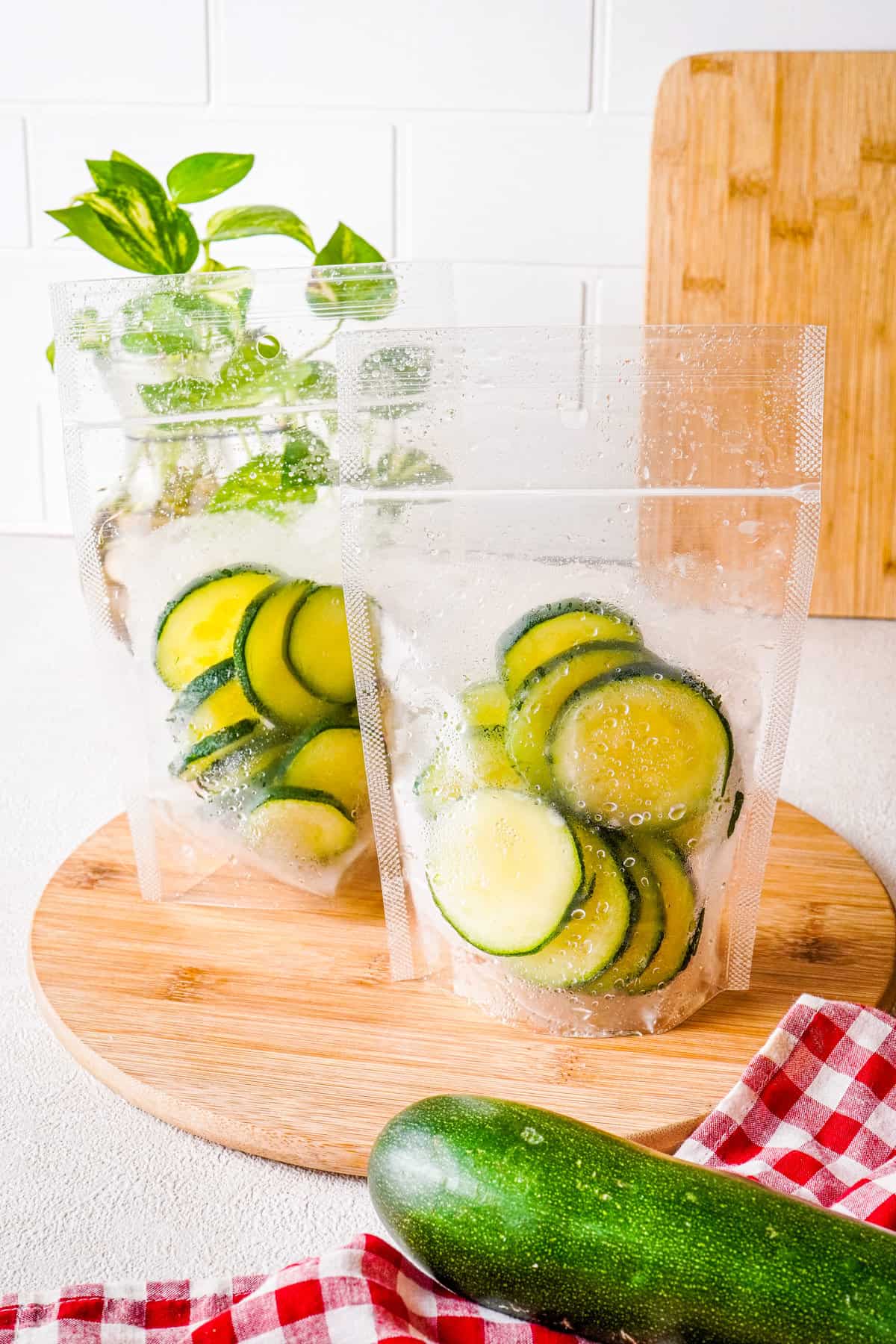
This post contains helpful tips and tricks! If you're in a rush, please use the "Jump to Recipe" below!
Why you'll love this recipe:
- Great way to preserve zucchini. Zucchini is a seasonal vegetable, so it's not always available. When zucchini is frozen properly, it will retain its flavor and texture, and you can enjoy it all year long!
- Simple process. Freezing zucchini is super simple. You don't need any special equipment or skills! You can freeze zucchini as slices or shredded, and freeze it with or without blanching.
- Cost-effective. There is an abundance of zucchini during summer, so it's relatively inexpensive. Freezing extra zucchini is a great way to save money.
- Versatile. Zucchini can be used in a variety of recipes, including soups, stews, casseroles, and breads. [Shruthi to include links]
📋 Ingredients and notes
You'll need zucchini, some plastic wrap (or beeswax paper), and an airtight container or freezer-safe bag (and maybe a baking sheet!)
How can you freeze zucchini?
You can freeze zucchini in different ways. It is important to understand how to best prepare the zucchini based on what you want to use them for.
- If you intend to use them in soups, casseroles, or sauces, slicing them is the best way to freeze them so you can retain some of the structure!
- If you want to use them in smoothies or in baked goods (like zucchini bread) — you should freeze them as grated or shredded zucchini instead!
📖 Freeze zucchini slices
Start by rinsing the zucchini — this helps get rid of any dirt on the skin that might transfer inside as you slice them open. Dry them thoroughly. Use a sharp knife to remove the ends of the zucchini.
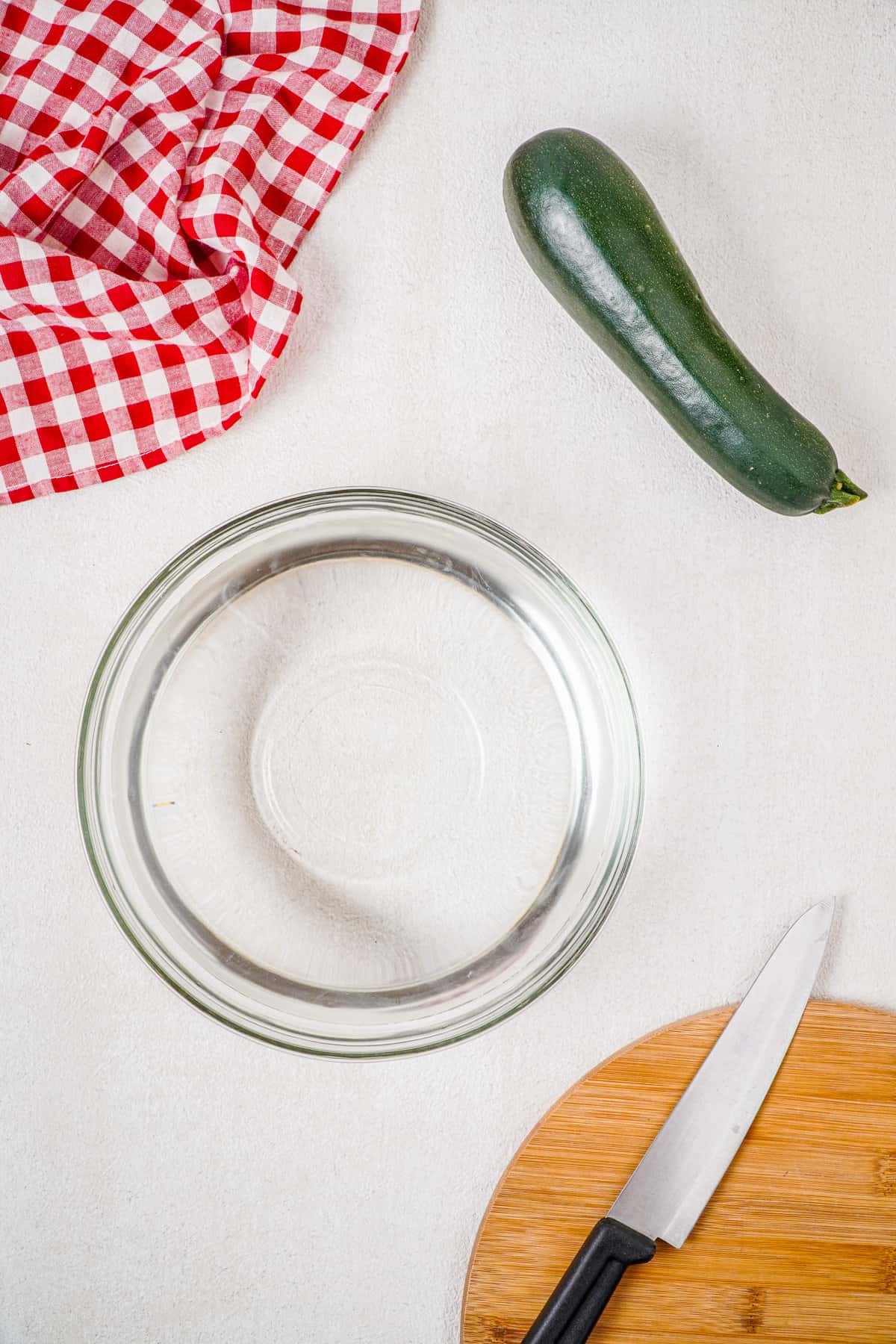
Slice them into ¼" thick slices and set them aside.
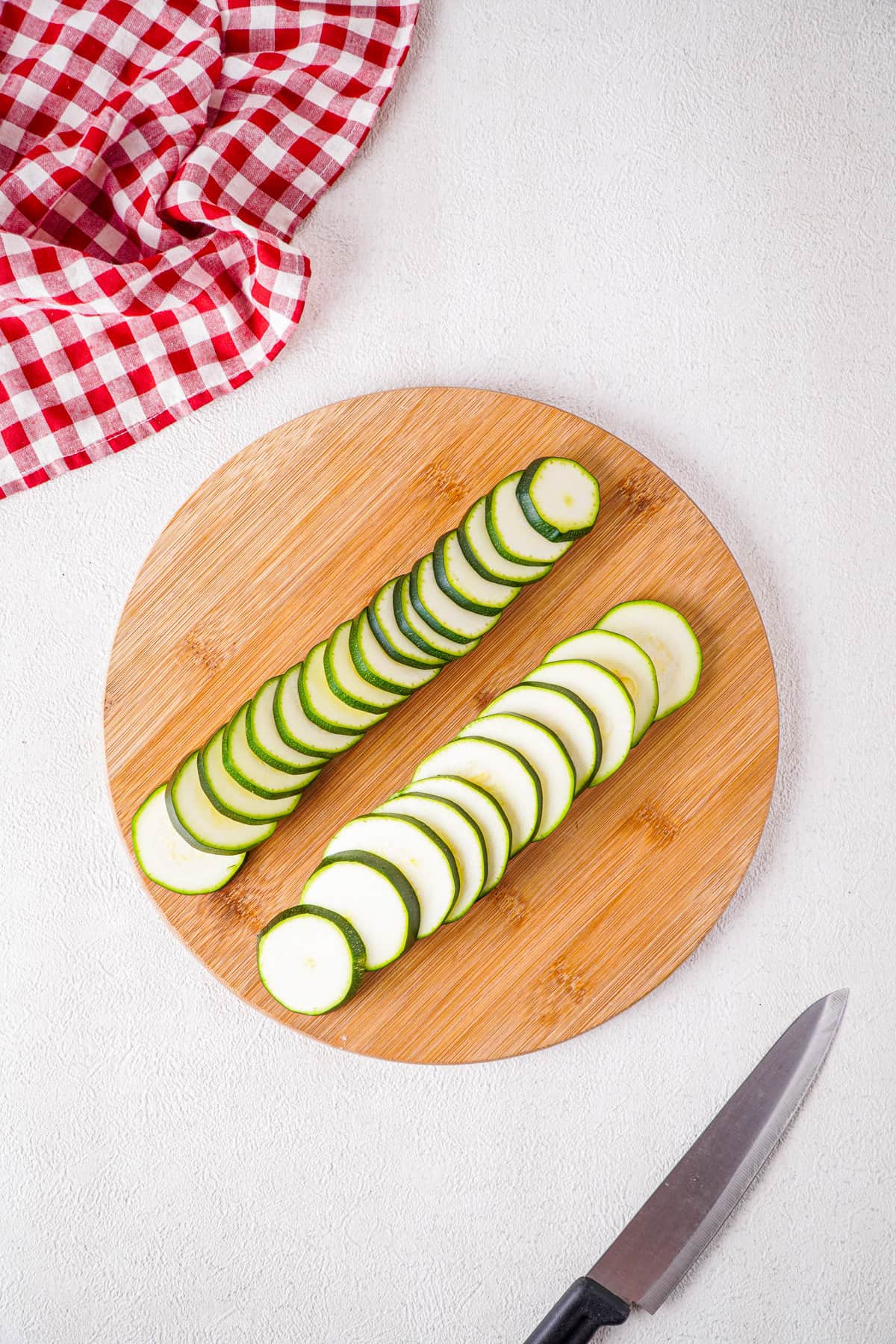
Blanch the zucchini by first adding the zucchini to a pot of boiling water for a minute and then transfer them to an ice bath using a slotted spoon. This process deactivates enzymes that typically cause discoloration of zucchini!
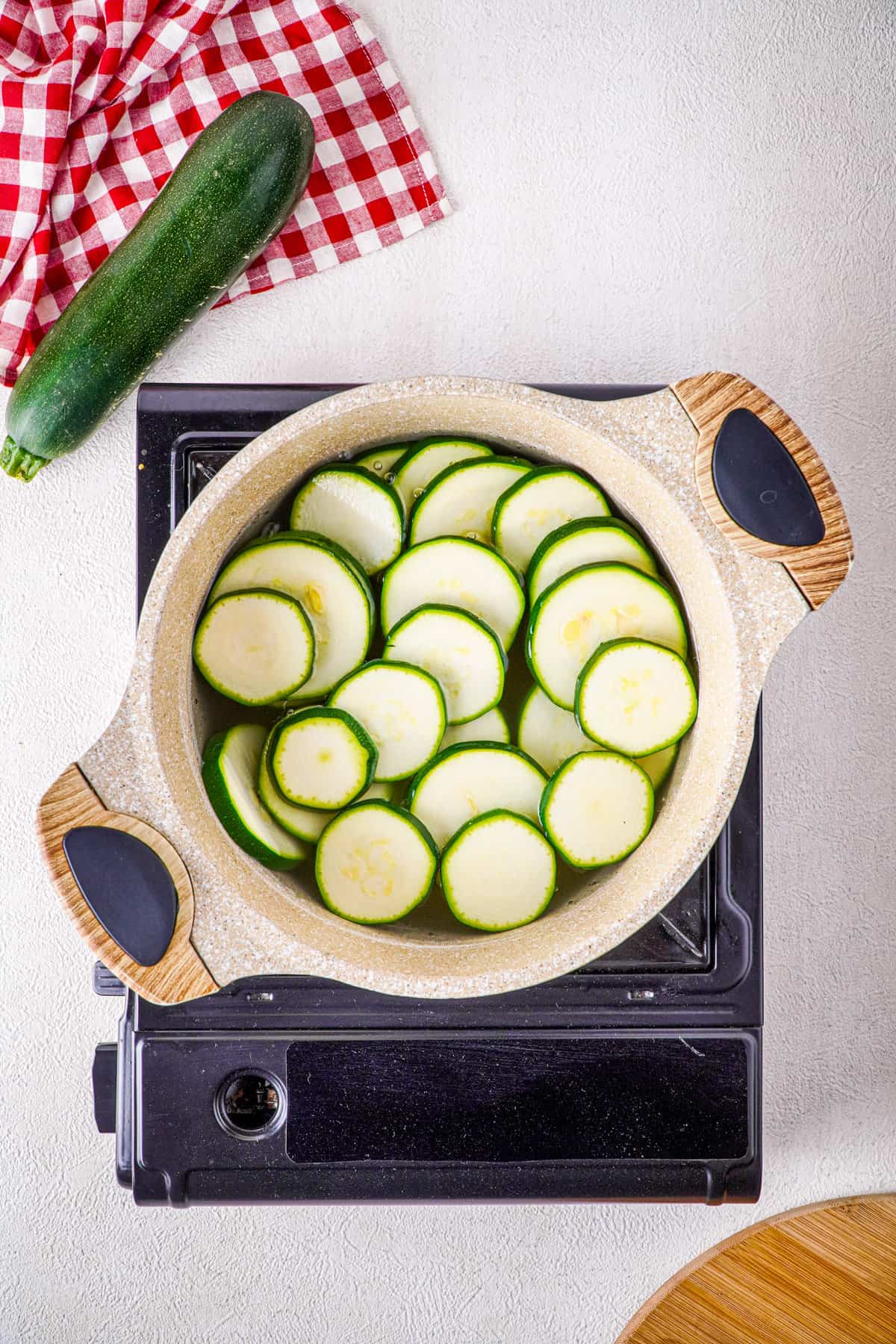


Drain the zucchini and gently pat it dry with a clean kitchen towel or paper towel.
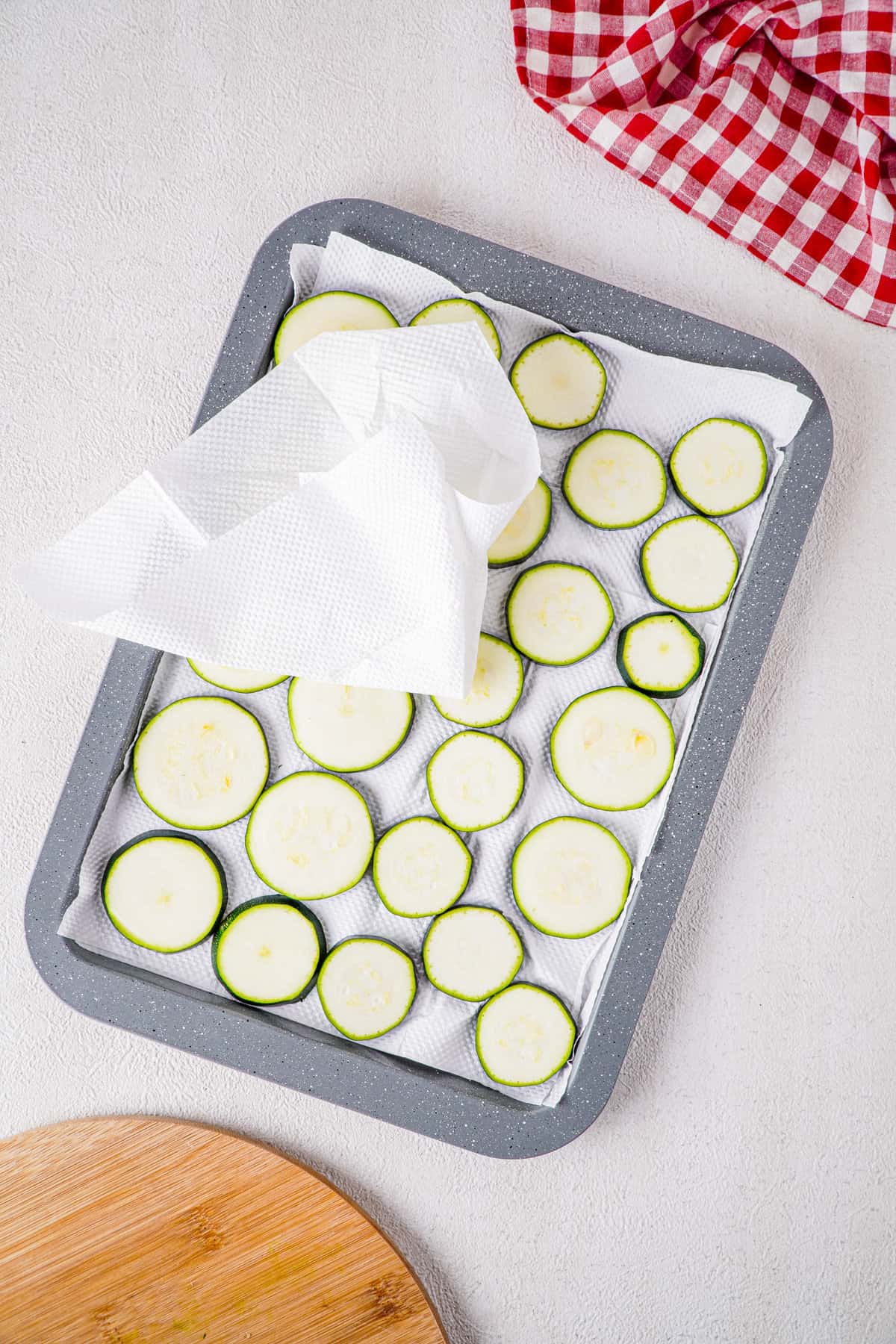
Line a baking tray with a silicon mat or parchment paper and then flash-freeze the zucchini by laying slices on the baking sheet. Place this in the freezer for 1-2 hours so it's frozen. This helps to avoid a big clump once you throw them all together in a freezer container.
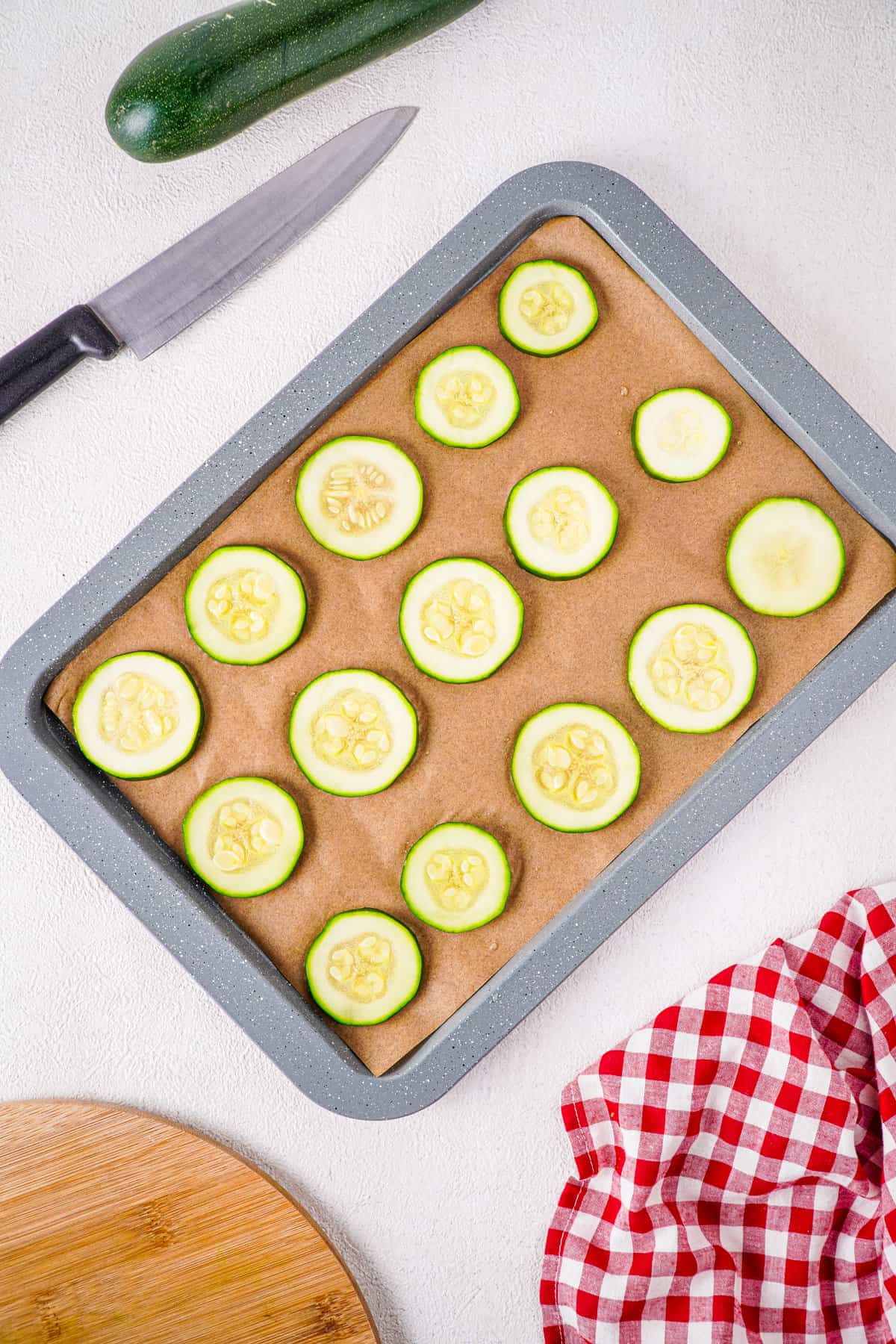
Once frozen, transfer the frozen zucchini pieces into freezer-safe containers or zip-top bags. I typically like portioning them into individual zucchini amounts!
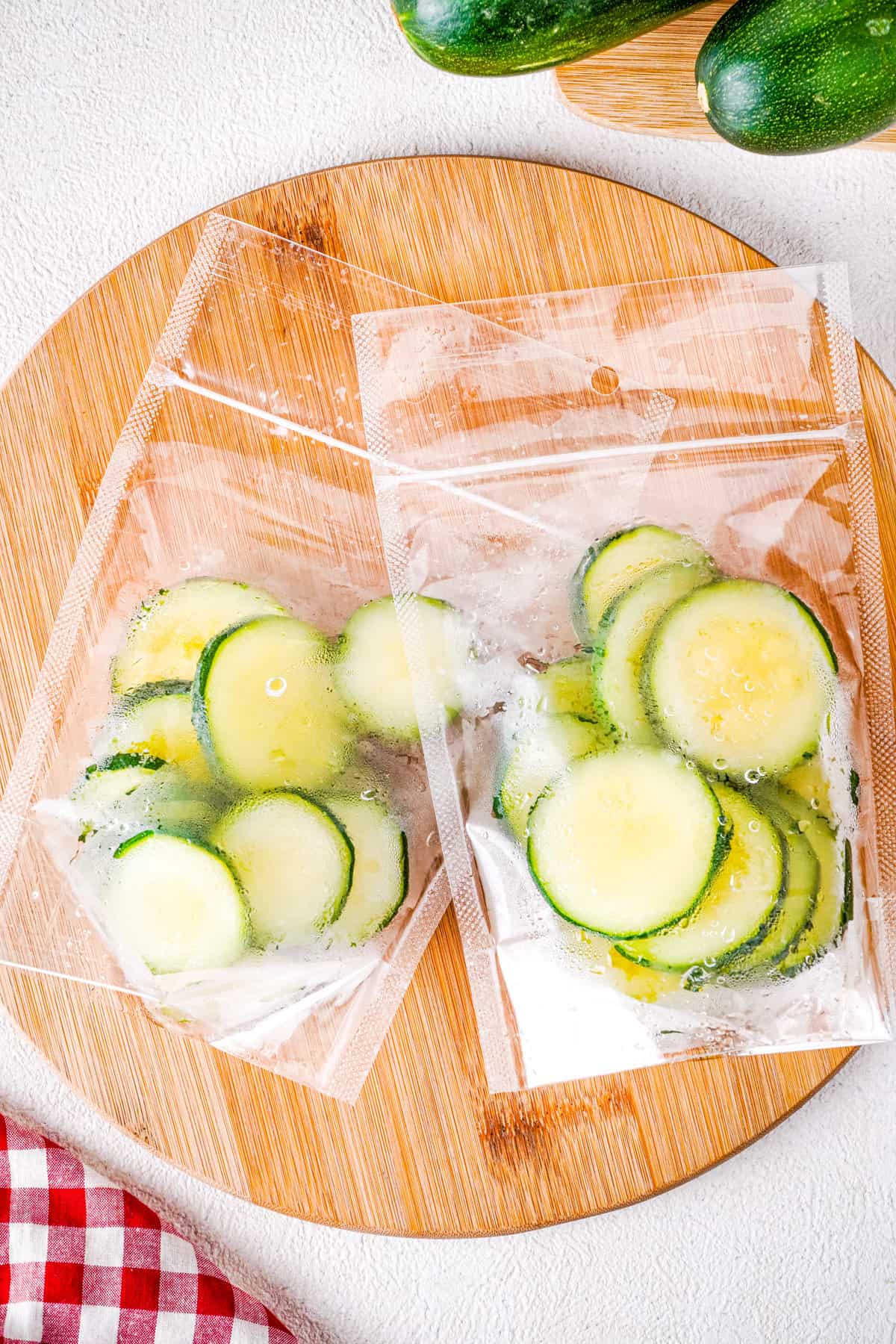
📖 Freeze grated or shredded zucchini (no blanching)
If you're wondering if it's possible to freeze zucchini without blanching, this method is for you! When you grate zucchini, it still works for sauces and baked goods — but might be a bit more difficult for stuff where you want to preserve the structure of the zucchini.
Start by rinsing the zucchini — this helps get rid of any dirt on the skin that might transfer inside as you slice them open. Dry them thoroughly.
Slice off the top and the bottom edges. If you're planning to save the zucchini for baked goods, cut the zucchini vertically in half and then scoop out the seeds.
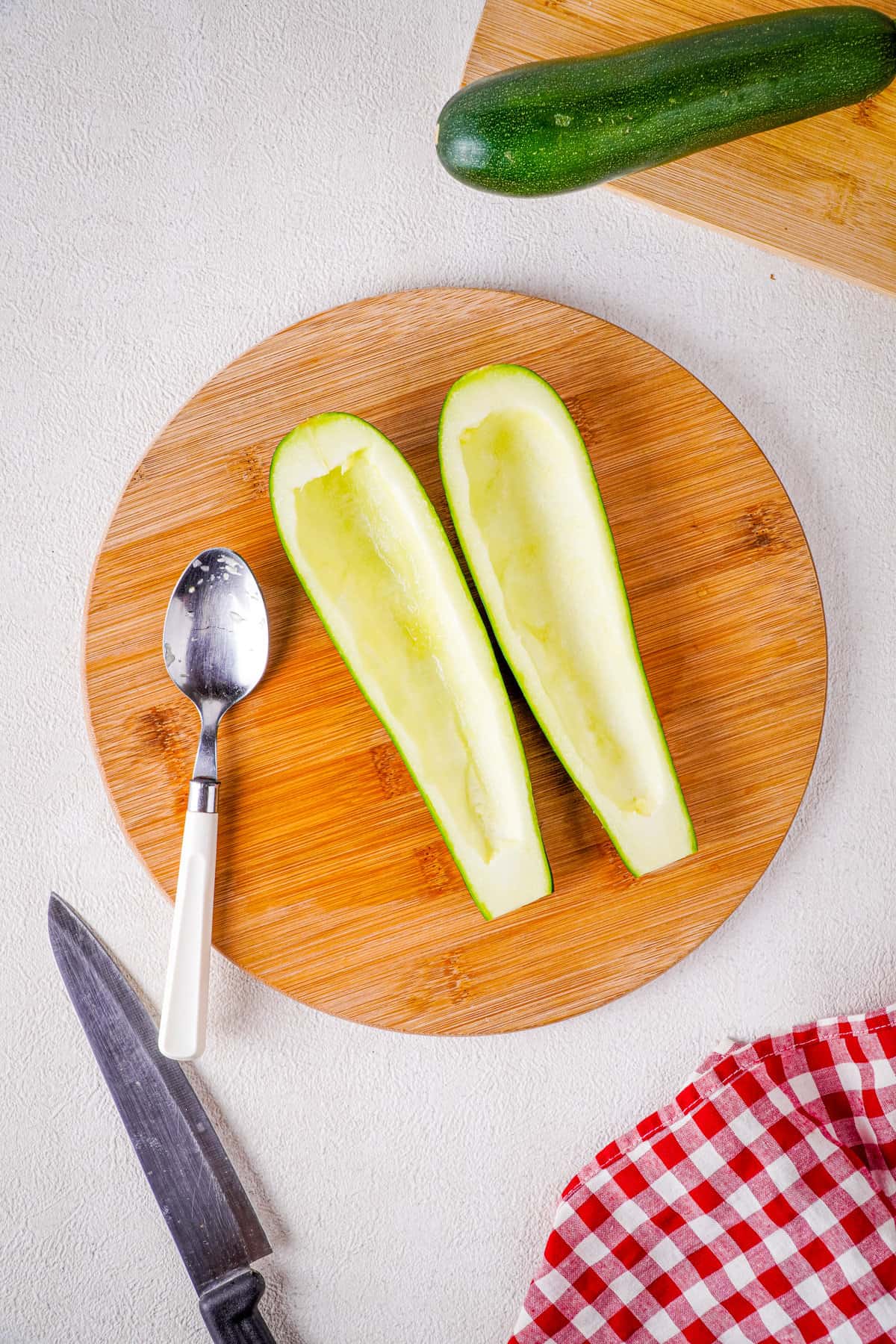
Using a box grater, grate the zucchini onto a clean cutting board. Use a clean kitchen towel to wring the shredded zucchini dry — this helps absorb excess moisture.
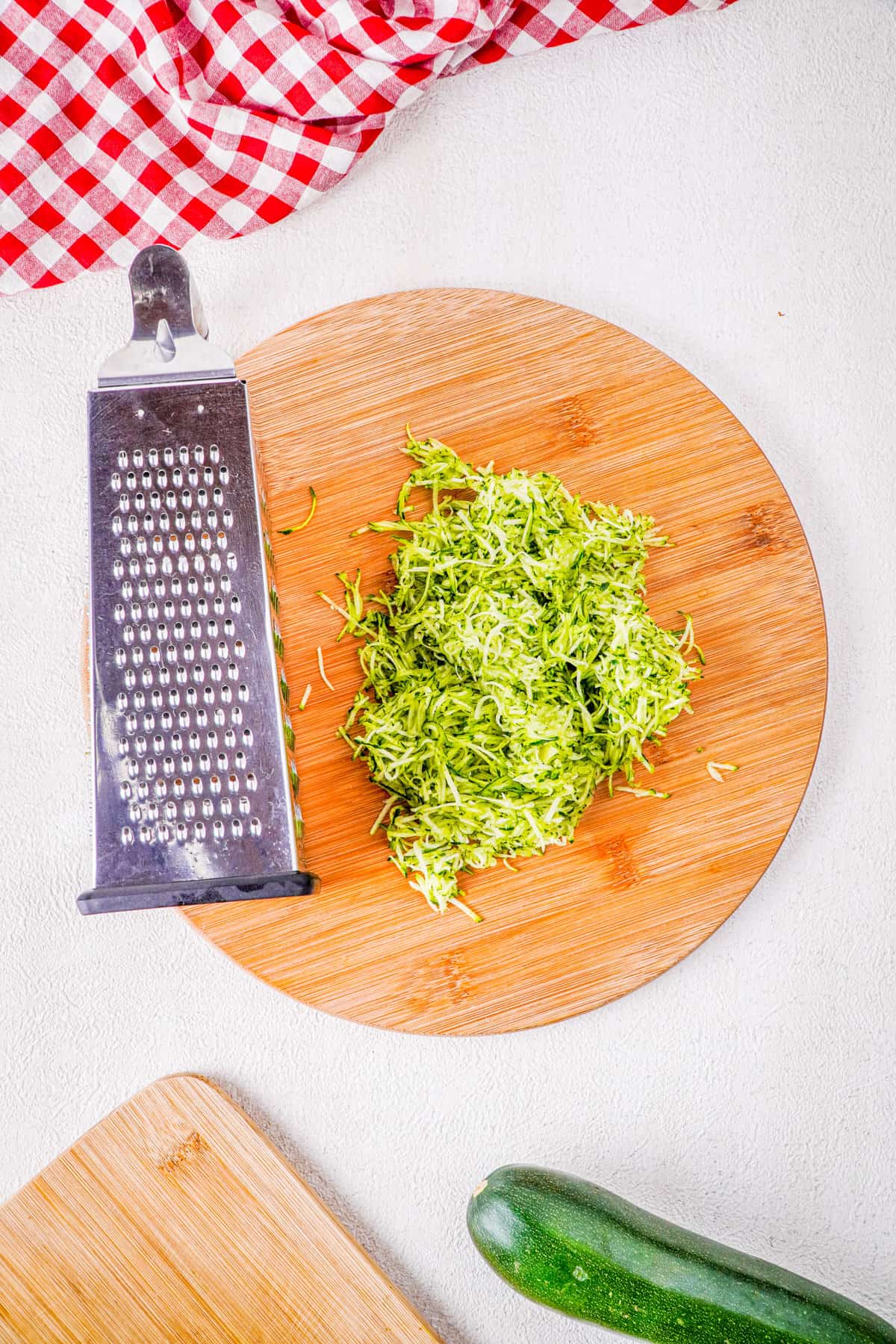
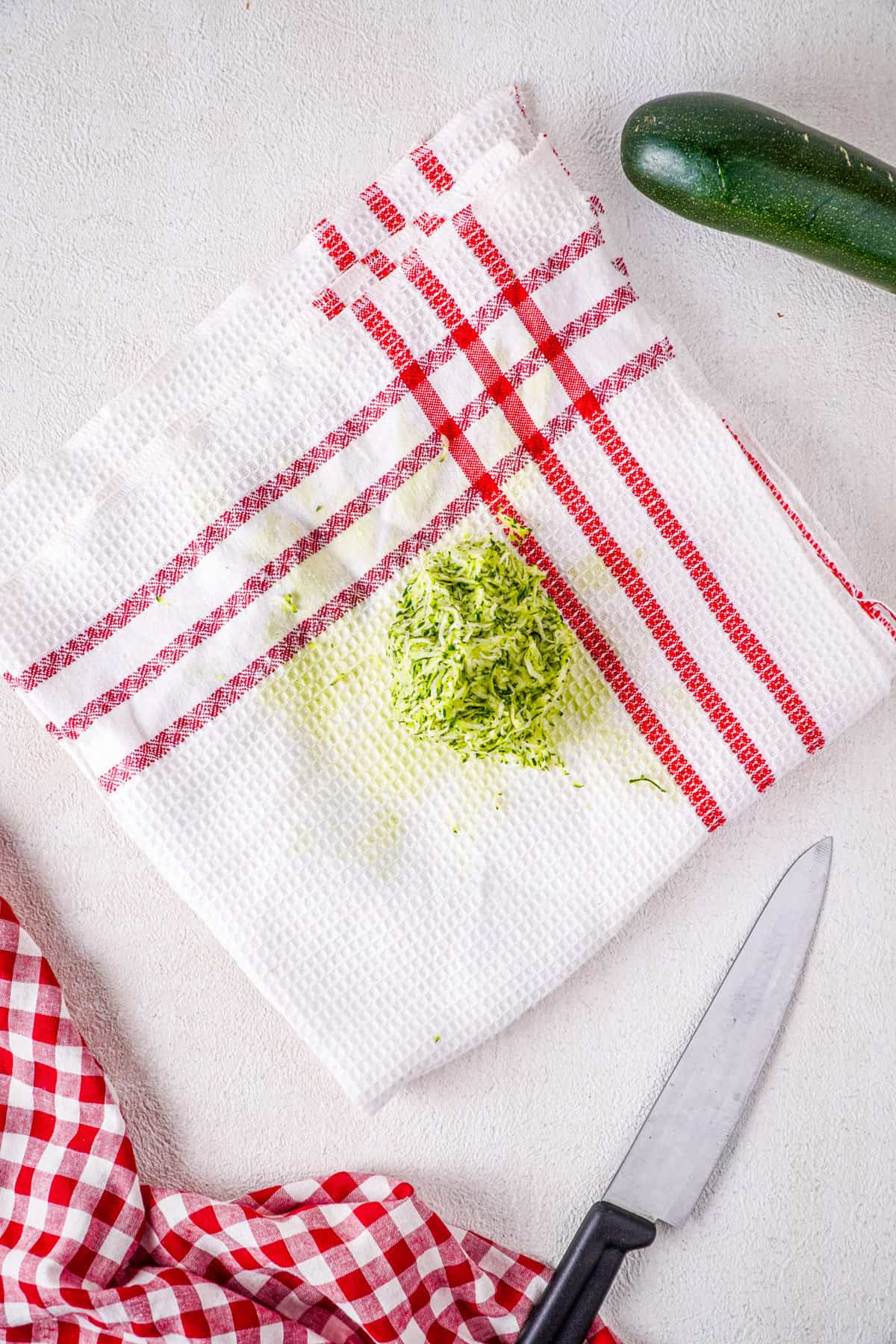
Then, using a measuring jar, portion out the grated zucchini into single-cup portions. Trust me, you'll thank yourself later when you don't have to wait until it defrosts to measure out the right amounts. Store each individual portion in a freezer-safe container to avoid freezer burn!
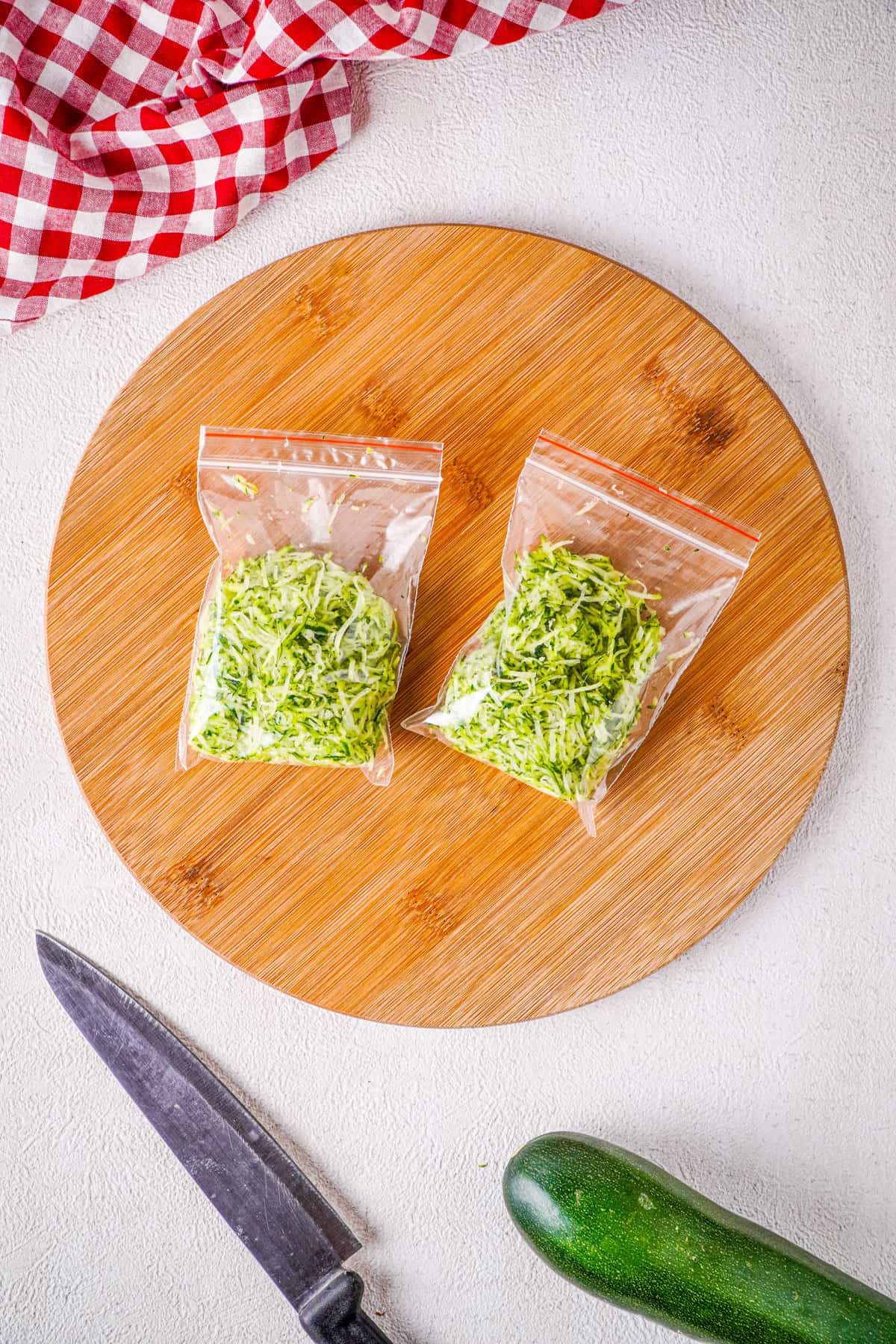
👩🏽🍳Top tips and FAQs
Freezing zucchini is a simple process that will preserve its flavor and texture. Following these tips will give you the best results so you can make your favorite zucchini recipes later.
- Choose the right zucchini. Look for raw zucchini that is firm and bright green. Avoid zucchini that is soft, has blemishes, or is starting to turn yellow. Pick zucchini that's 6 to 8" long. -it should feel heavy for its size!
- Wash the zucchini thoroughly and blot out excess water. Use a vegetable brush to scrub the zucchini under cool water. Zucchini has high water content. So, regardless of whether you're slicing them or grating them, it's a good idea to squeeze out excess water with paper towels.
- Blanch the zucchini to preserve color. Blanching zucchini is the easiest way to preserve its bright color and texture, but this is optional, especially if you're using the zucchini in bread or sauce.
- If freezing slices, spread the zucchini in a single layer on a baking sheet. This helps prevent them from clumping in a freezer bag. Once the zucchini is frozen solid, you can transfer it to freezer bags or containers.
- Pack zucchini properly. When packing the zucchini, be sure to leave some space at the top of the bag or container for expansion. Label and date the bags or containers!
Troubleshooting FAQs
Good zucchini is typically 6-8" long, with dark green skin that is free from blemishes. It's also not mushy. If you find yourself one of these, then you have a good one in hand!
The rule of thumb I use is, "thaw for baking, don't thaw for cooking" To thaw, I move them to the fridge the night before. Or if you forget, place the entire container or bag in a bowl of warm water.
I haven't had very much good experience with this since they tend to go really mushy. Slices or grated zucchini have worked best for me!
Yes! You can absolutely use the sliced method for other squashes. Most other squashes don't have as much water content as zucchini, so you might even be able to skip the blanching for some of those!
Yes, you can! Thawed zucchini tends to be soft and watery—whether you blanch it or not. So, technically, you could skip the blanching altogether. That said, if you blanch and blot dry thoroughly, it does help retain the texture a tiny bit more.
Honestly, it's so simple. For soups and stews (or sauces) - just throw them in at the end of your cooking process. For casseroles, thaw it first, blot and remove excess water and juice once it thaws, and then chuck the slices in the casserole per recipe.
🍴 How to cook frozen zucchini
Store: Frozen zucchini can be stored in the freezer for at least 3 to 4 months. I've found that it starts getting freezer burned after the 4-month mark, so typically try to use it up in that timeframe.
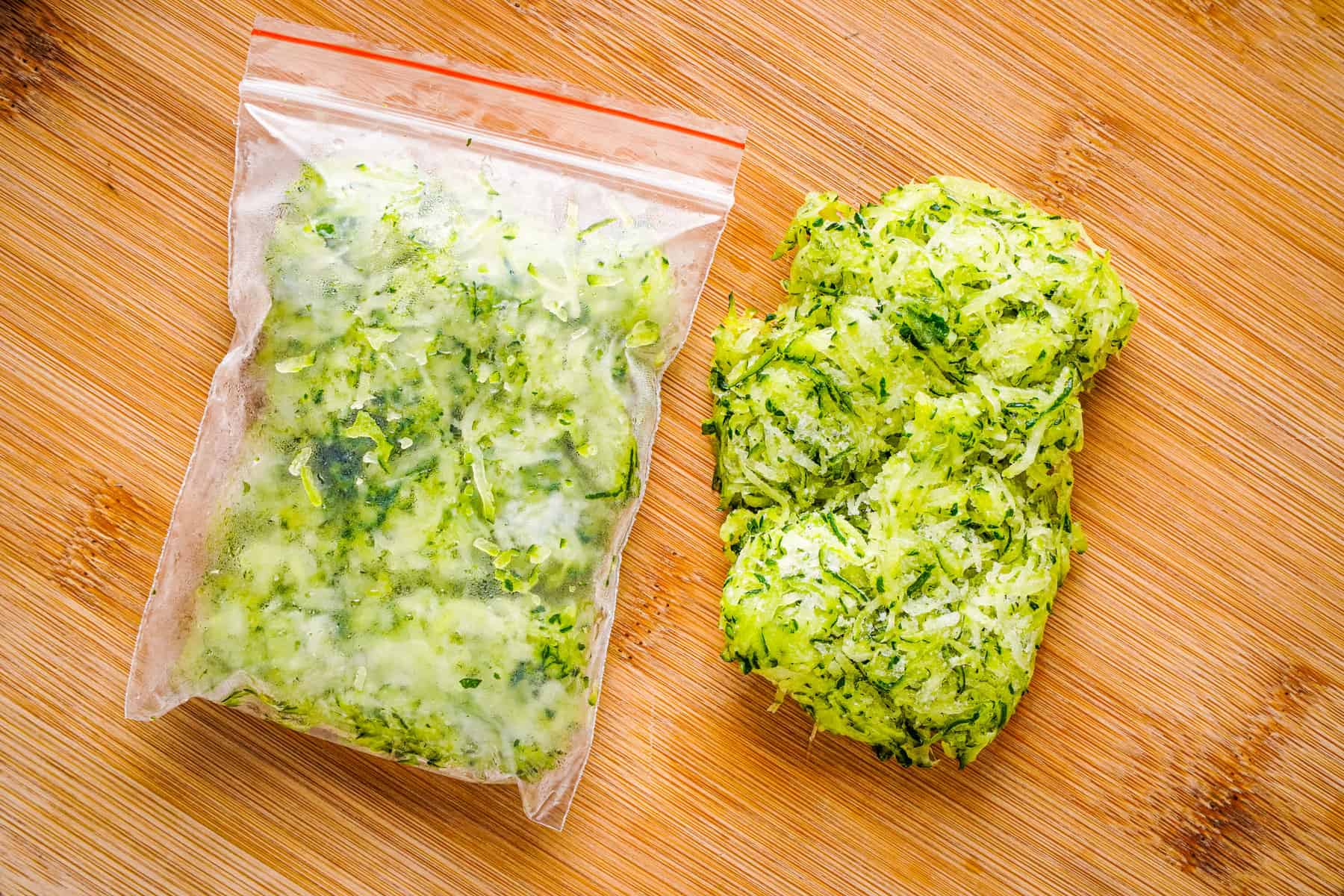
Note that given the water content of zucchini, it's best used in soups, stews, casseroles, smoothies, or baked goods (versus as a side dish, for instance).
Don't forget to check out these other food preservation recipes:
If you tried this recipe, don't forget to comment and rate! ⭐⭐⭐⭐⭐
📖 Recipe
Frozen Zucchini
Ingredients
- 1 zucchini, medium sized
- 1 gallon water, optional, for blanching
Instructions
Freeze Zucchini Slices
- Clean the zucchini thoroughly and dry them. Then, cut the edges off. Slice the zucchini into ¼" thick slices. Place them on a clean kitchen towel or a set of paper towels, and use another towel to blot them dry as best as you can.
- Blanch the zucchini by first adding the zucchini to a pot of boiling water for a minute and then transfer them to an ice bath using a slotted spoon. This deactivates enzymes that typically causes discoloration of zucchini!
- Line a baking sheet with a silicon mat or parchment paper. Place the dry zucchini slices on the baking sheet, evenly spaced apart. Place this in the freezer for at least an hour to flash-freeze (this avoids them clumping together later!)
- Portion the zucchini and place them into freezer-safe bags or containers.
Freeze Grated Zucchini
- Clean the zucchini thoroughly and dry them. Then, cut the edges off. If you plan to use the zucchini for baking, then I recommend slicing it into two halves and scooping out the seeds.
- Use a box grater to grate the zucchini on a cutting board. Place the grated zucchini in a clean kitchen towel and wring it dry over your sink to remove excess water.
- Then, portion your grated zucchini into the appropriate amounts (I typically do one cup portions). Transfer each portion into an individual freezer-safe bag or container and then place in the freezer.
Notes
- You can cook the zucchini directly if you wish. If you wish to use it in casseroles or bake with it, thaw it first by moving the container into the fridge the night before or by placing the container in a bowl of warm water first.
- Frozen zucchini will last 6 months (sometimes up to a year!) - I like using mine up at the six month mark since I've observed they get freezer burned thereafter.
Nutrition
Note: This post was originally published on July 5, 2021 and updated on May 30, 2023 with new tips, tricks and photos.


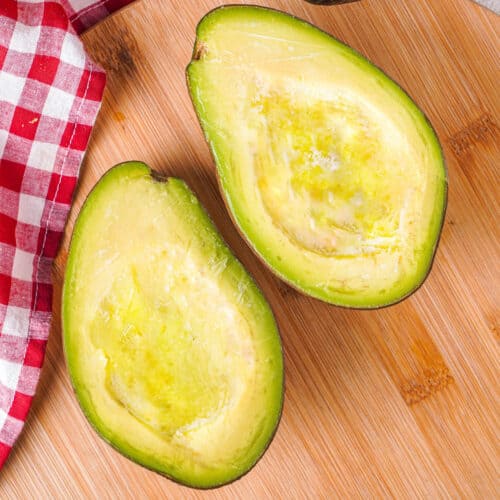
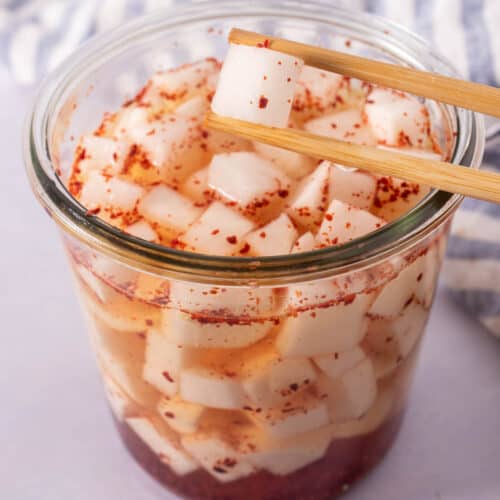
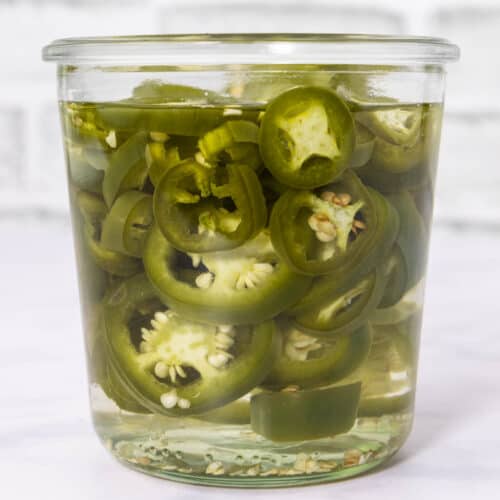
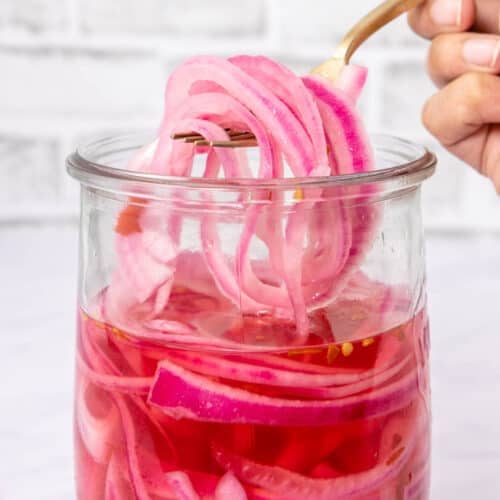
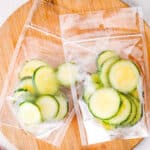








Comments
No Comments